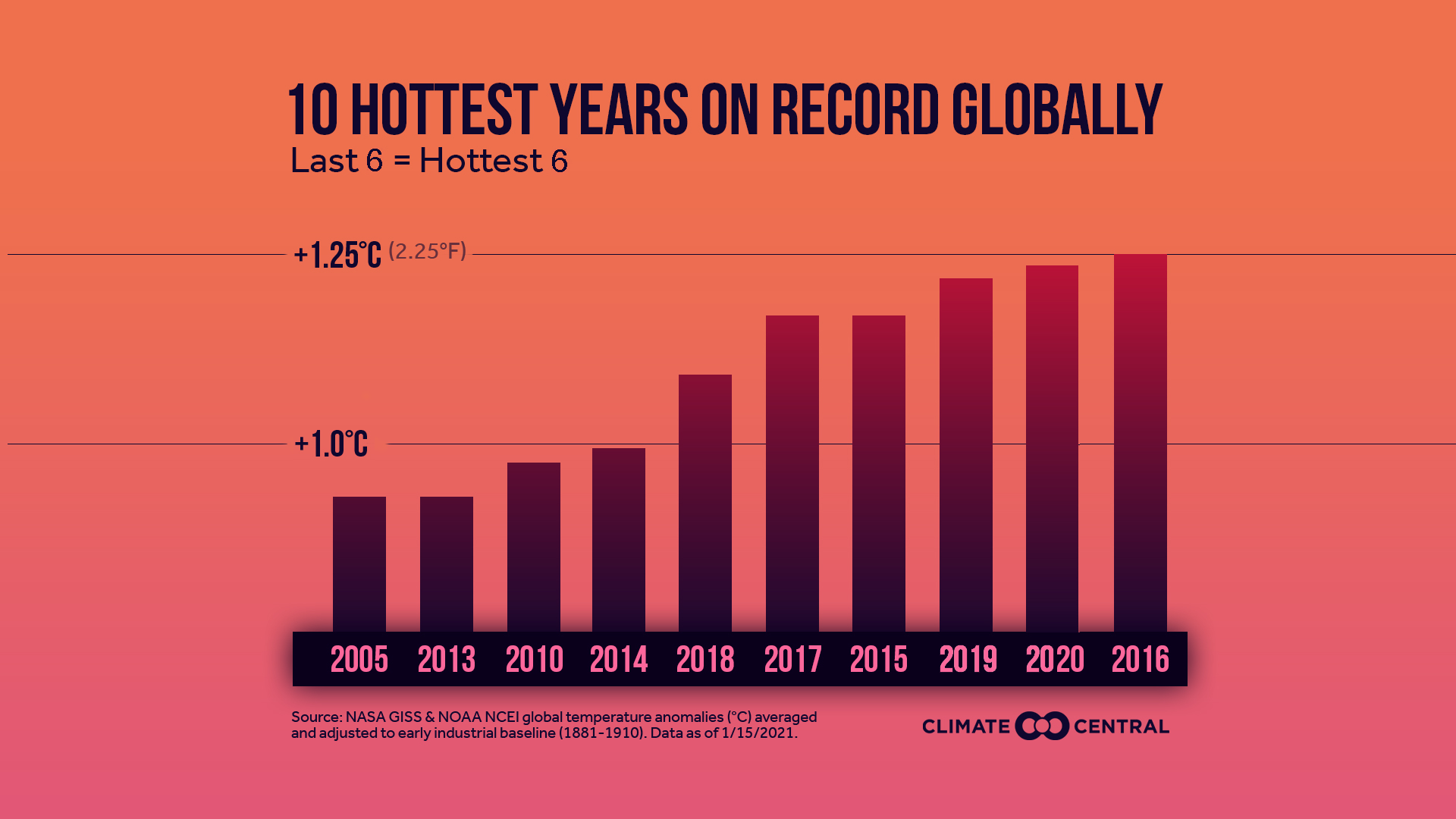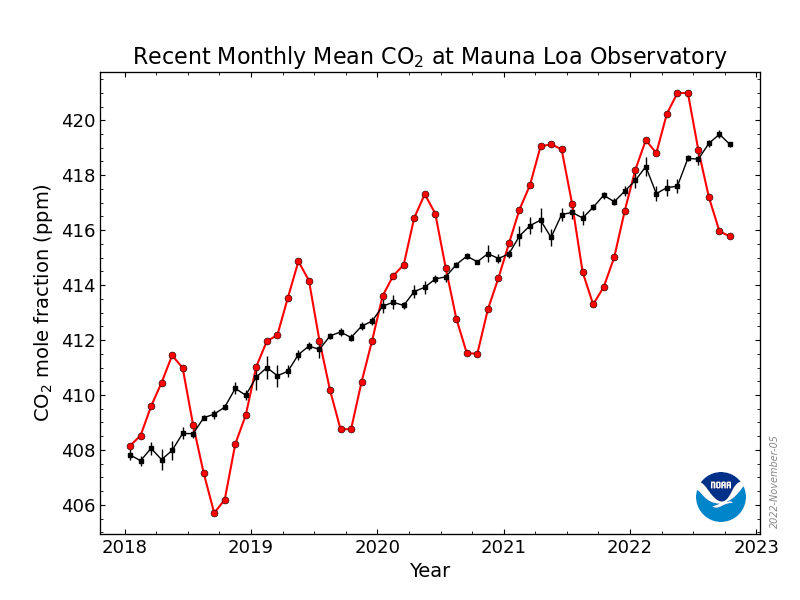
|
|

|
- The Earth was formed about 4.54 billion years ago.
- In the beginning, the Earth's atmosphere contained
very little oxygen.
- Life, it is most basic form, developed around
3.7 billion years ago.
-
Early plants developed around 1 billion years ago.
- Through photosynthesis, plants uptake carbon dioxide into the biosphere as organic matter, and release oxygen as a byproduct.
- Through geologic time, oxygen accumulated gradually in the atmosphere, reaching a value of about
21% of atmospheric gases at the present time.
- Through geologic time, surplus organic matter has been sequestered in the lithosphere as fossil organic materials
(coal, petroleum, and natural gas).
- Early animals developed around 800 million
years ago.
- Animals operate in the opposite way than plants:
They take up oxygen, burn organic matter (food),
and release carbon dioxide as a byproduct.
- Ardipithecus, the earliest known genus of the human lineage,
inhabited the Earth between
5.6 and 4.4 million years ago. - Cool climatic conditions have prevailed during the past
1 million years.
- The species Homo sapiens emerged in Africa
about 300,000 years ago.
- Estimates for the development of the variety Homo sapiens sapiens, to which all humans belong,
range from 160,000 to 95,000 years ago.
- The Last Ice Age began to recede about 20,000 years ago.
- The concentration of carbon dioxide in the atmosphere was as low as 190 ppm about 21,000 years before present, near the end of the last Ice Age.
- The agricultural revolution began apparently in China about 11,000
years ago.
- The agricultural revolution caused a reduction in standing biomass and
reduced the uptake of carbon dioxide, indirectly contributing, however so slightly, to global warming.
- The concentration of carbon dioxide in the atmosphere increased gradually, from a low of 190 ppm at the end of the Last Ice Age, to about 295 ppm at the beginning of the 20th century.
- The industrial revolution began in England around 1760, i.e., about
260
years ago.
- In October 2011, the world's population
reached 7 billion.
- The current world population is 8.037 million (November 2022).
- The world's population is currently increasing at the rate of about 83 million per year.
- The global fleet of motor vehicles is estimated at approximately 1.446 billion (2022).
- Motor vehicles (cars, trucks, buses, and scooters) account for about 80% of all transport-related energy use.
- The concentration of carbon dioxide in the atmosphere, which was at 295 ppm in the year 1900, rose to 316 ppm in 1959, at an average 0.36 ppm per year.
- Measurements of the concentration of carbon dioxide since 1959 (316 ppm) have revealed an increase to 418 ppm at the present time (2022), i.e., at an average rate of 1.59 ppm per year.
- In the past two decades, the concentration of carbon dioxide has increased at an average rate of 2 ppm per year.
- The concentration of carbon dioxide increased 2.94 ppm in 2016, more than in any other year of record.
- The warmest year of record is 2016, and the second warmest, 2020. The last six years (2015-2020) have been the hottest.

- About 91% of the annual increase in atmospheric carbon dioxide is due to the burning of fossil fuels.
- The remaining 9% is attributed to anthropogenic changes in land use, which have the effect of reducing the net uptake of carbon dioxide.
- Anthropogenic changes in land use occur primarily when forests are converted to rangelands, rangelands to agriculture, and agriculture to urban areas.
- Land use/land degradation (deforestation, overgrazing, overcultivation, urban sprawl, desertification, and salinization) contributes indirectly, however so slightly, to global warming.

- The current world population is 8.037 million (November 2022).